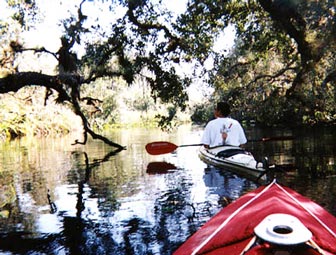
When you choose your boat for its maximum pleasure ratio, you spend more time out in your boat, and less time working on it.
If you're reading this, chances are you spend lots of your time and money on boats. Why do you do that?
Some of you just like to fiddle with boats. Work on boats, upgrade boats, make everything about your boat perfect. This article is not for you. This is for those of us who just want to GO OUT in our boats. We want to use our boats, because it brings us peace or pleasure, whether through sailing, fishing, skiing, diving, or just cruising around.
We tolerate all the work and expense just to get to those moments when we are out there on a boat, doing what we love. What does that mean for the "boating pleasure equation"? It means we want to maximize the amount of play time on our boat, and minimize the amount of work time and expense. How do you keep the boat's play to work ratio high and the expense low?
The answer is simple and important: figure out the very LEAST boat that will meet your needs, and buy that one.
If you buy more boat, your needs won't increase. You still just want to be out there, doing what you love. Your investment in time and money will go up, but your play time can only go down with a boat larger and more complex than you need. You will find yourself going down to the boat to rewire something, replumb something, empty out and clean something, paint, varnish, or wax something, and you will NOT be going out boating. Those days kill the work to play ratio.
All this leads me to two fundamental rules of boating fun:
Rule #1: THE INVERSE PROPORTION RULE:
The amount a boat gets used and enjoyed varies inversely with length.
This is easiest to see at the ends of the spectrum. The 17 foot daysailer or flats boat gets used every weekend, sometimes on weekday afternoons. The 60 foot yacht mostly sits tied to the dock, sometimes for months. It's too much trouble to untie it just for a short afternoon jaunt. A smaller boat is always easier to take out, easier to use, and easier to clean and put away.
Rule #2: THE 10-FOOT RULE:
For every 10 feet of boat, you will have 1 project to do.
Buy a 20 foot boat, and there will always be about 2 things you need to do on the boat. Do them, and they will immediately be replaced by 2 more. If you buy a 30 foot boat, you will have 3 such things. A 40 foot boat will have 4, and so on. They might be major projects, such as replacing engine exhaust risers and manifolds, or they might be minor things like cleaning, lubricating, or varnishing something, but there will always be a list of projects for any boat, and the list gets longer as the boat gets longer. The items on the list also tend to take longer and cost more as boats get larger.
This leads to a corollary to the ten foot rule, the ADD A ZERO RULE: You may be accustomed to those $50 to $500 repair bills on your 17 foot boat, but you probably will not like the $500 to $5,000 bills that are routine on 40 foot boats.
The TEN FOOT RULE and the corollary ADD A ZERO RULE apply only to boats that are being actively used and maintained. If a boat has been neglected, add one project per ten feet per month of neglect. A 30 foot boat that has been neglected for two months will have about 6 things which need to be addressed, in addition to the 3 which it always has just because it is a 30 foot boat, so there will be 9 things that need to be done before you can go out and play. Leave it for another month, and there will be 12 projects on your list.
A few boats violate the 10-foot rule. I have a 17' Ocean Kayak that is old and beat up. When I'm done using it, I squirt it off with a hose and throw it on a rack. It's all play and no work. It would be the perfect boat if only it met all my needs. Unfortunately, I have a serious boat problem, and I need a small fleet.
Leave a Reply
You must be logged in to post a comment.